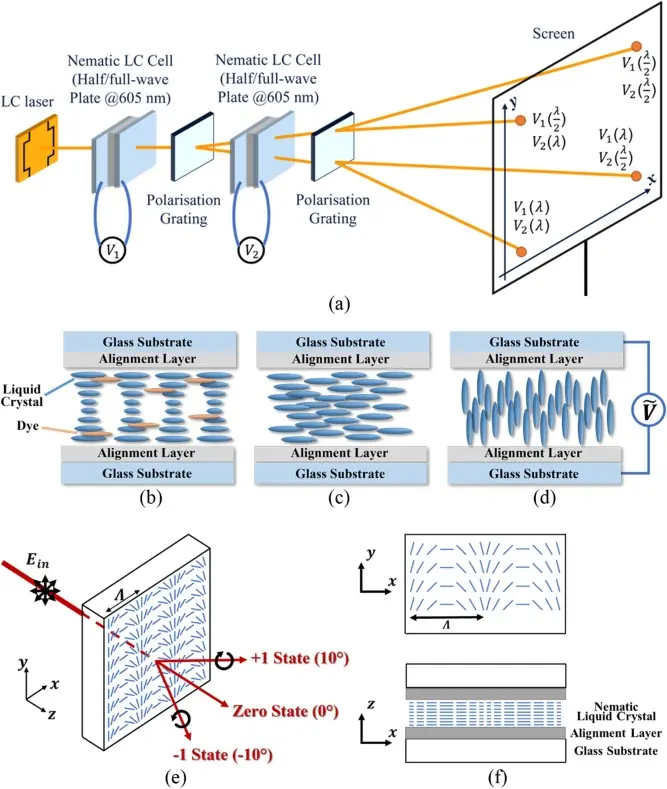Fiber-Based Amplification of Mid-Infrared Diode Lasers for Improved Medical and Communication Technologies

Scientists have demonstrated for the first time the fibre-based amplification of mid-infrared diode lasers in the 2.78 µm wavelength range. By testing continuous wave and ns-pulsed input signals, the method has the potential to significantly improve medical and communication technologies. The research not only highlights the advancement of GaSb-based diode lasers and Er-doped fluoride fibre technologies, but also reveals interesting new performance properties when different fibre end-cap materials are used.
Mid-infrared diode lasers are critical in numerous applications, such as environmental monitoring, trace gas sensing, and medical diagnostics. The amplification of these lasers could greatly enhance their usability and efficiency. In recent years, Gallium Antimonide (GaSb)-based diode lasers and erbium-doped (Er-doped) fluoride fibre technologies have advanced significantly, setting the stage for further experiments and developments.
Building on Past Studies: Bridging the Gap Between Diode Lasers and Fibre-Based Laser Amplifiers
The development of GaSb-based diode lasers and Er-doped fibres has opened up new possibilities for laser amplification, especially in the mid-infrared wavelength range. Advances in Er-doped fibres, for example, have demonstrated that these materials can provide high amplification efficiency in the 2.7 to 2.9 µm wavelength range. GaSb-based diode lasers have also shown promise, with wavelength coverage extending beyond 3 µm. While previous studies have focused on amplification in either continuous wave (CW) or ns-pulsed input signals, little attention had been given to exploring the potential for amplification of CW and ns-pulsed signals together.
With this new research, scientists have managed to bridge the gap between GaSb-based diode lasers and fibre amplifiers, demonstrating for the first time their compatibility in producing amplified laser signals. The study takes what is known about these powerful technologies, and pushes them one step further in the quest for enhanced laser performance.
Experiment Setup: Combining Diode Lasers and Fibre Amplifiers
To conduct the experiments, researchers set up a laser system consisting of a GaSb-based diode laser and a single-stage Er-doped fibre amplifier. Amplification was tested for continuous wave (CW) and ns-pulsed input signals, generated by gain-modulation of the GaSb-based seed lasers.

The team compared the amplification of commercial and custom-made GaSb-based seed lasers, analyzing the impact of different fibre end-cap materials on laser performance.
Noteworthy Discoveries: Higher Output Powers, Shorter Pulse Durations, Faster Pulse Repetition Rates
The experimental results include several noteworthy discoveries: output powers up to 0.9 W, pulse durations as short as 20 ns, and pulse repetition rates up to 1 MHz. These findings are quite significant when taking the current state of GaSb-based diode lasers into account. Higher output powers and pulse repetition rates, as well as shorter pulse durations, ultimately lead to increased efficiency and performance in various applications, benefiting industries like medicine, communications, and environmental monitoring.
In addition, researchers found that varying the fibre end-cap materials had noticeable effects on laser performance. This discovery brings additional nuance to the quest for refining and enhancing mid-infrared diode lasers.
Potential Impact: A Boon for Medicine, Communications, and Environmental Monitoring
The results of this research have the potential to greatly impact various fields, particularly areas where mid-infrared diode lasers are regularly used.
Medical diagnostics and analytics, for example, could greatly benefit from amplified mid-infrared diode lasers. The increased efficiency and power of these lasers could allow for more precise diagnostic testing, ultimately leading to better patient outcomes. Likewise, the communication sector could also stand to benefit from this research. Amplified mid-infrared diode lasers could be used to bolster communication speeds and reliability, especially in fibre-optic networks.
Furthermore, as our world continues to struggle with environmental challenges, better monitoring and analysis of the environment is increasingly important. The amplification of mid-infrared diode lasers may improve trace gas sensing and environmental monitoring capabilities, contributing to more effective pollution control measures and a healthier planet.
Limitations, Future Research, and the Road Ahead
While the findings of this research are promising, some limitations remain. First and foremost, additional research is needed to understand the full potential of combining GaSb-based diode lasers and Er-doped fibre amplifiers. Further investigation, for example, could be undertaken to optimize the use of different end-cap materials in improving laser performance. Similarly, researchers should strive to refine and enhance the experimental setup even more, potentially increasing the output power, pulse repetition rates, and pulse durations of the diode lasers.
In the long run, this research presents a strong foundation for continued exploration and experimentation in the realm of mid-infrared diode laser amplification. It will be exciting to see how future advancements in this field translate into tangible benefits for medicine, communications, environmental monitoring, and beyond. The road ahead is filled with promise, and this newfound compatibility between diode lasers and fibre amplifiers is just the beginning.






